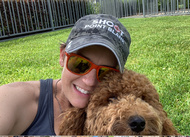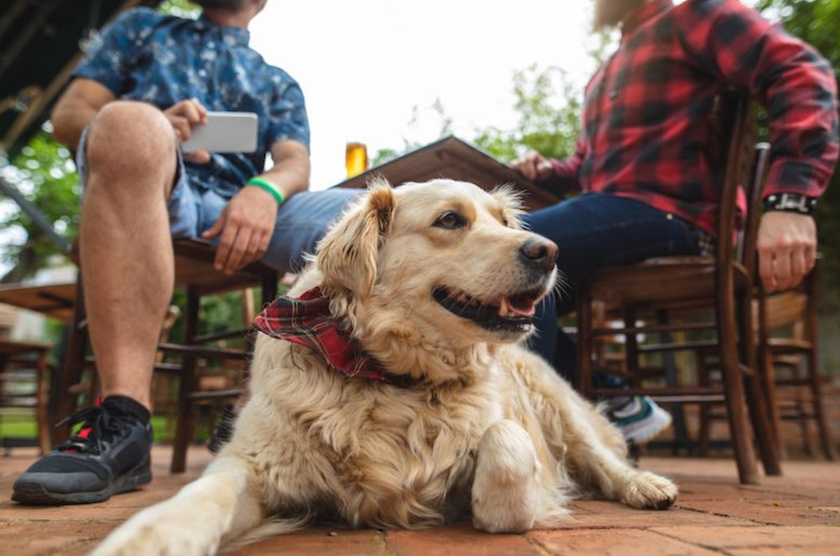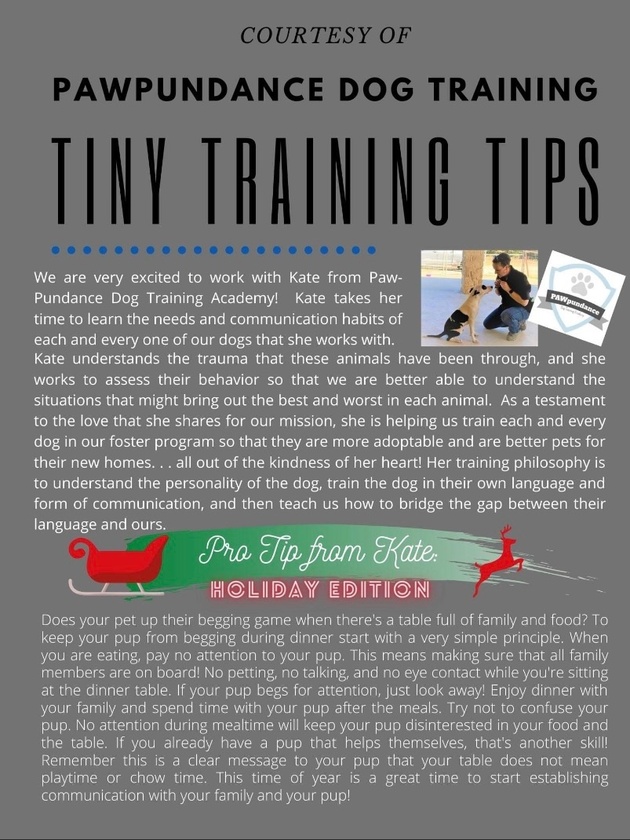
It’s ok! We’re here to help. We speak a little dog and can help translate for both of you. It’s probably just a miscommunication! And we are here to help get you both speaking the same language! Woof!
Connect with the PAWpundance training team and other members of the dog community to discuss better ways to communicate with your furry house guest.
**To get started USE code: TRIAL1month **
Separation Anxiety and Puzzles
Does my pup have separation anxiety?
There is a difference between separation anxiety and isolation distress. Although the differences are nuanced, is it necessary to know the difference? A big red flag is self mutilation. Does your pup lick their front paws when you turn your attention away? Does your pup destroy your home to the point of self-injury when you are gone? Do they destroy if they are simply separated from you? Will they void their bladder at the simple lack of attention? If they start to panic at the lack of attention, then it might be full scale separation anxiety. If they fearful and barking because they are being left alone at home, it's probably a case of isolation distress.
Both cases are on a spectrum. This anxiety can begin with puppies. If the puppies was weened from the mom too young, a potential for separation anxiety is more likely. The constant licking is the attempt to self-soothe and simulate a suckling. We also see these pups licking people in this same repetitive, self-soothing pattern. Keeping pups with their mom's until they naturally ween and with their litter for socialization will help prevent this from beginning.
How can we deal with it once it's begun? I like puzzles. I think the way we deal with issue is stale and not helpful. Why do I like puzzles so much? For one, it's stimulation? If they are alone, it gives the pups some stimulation to replace the destructive behaviors in our absence. And with that, it's a distraction. Instead of just asking a pup that's having a panic attack to sit still while we leave and come back, we give them a distraction. And it's not just any distraction. It's a distraction that is a success. There is a win.
We increase the time between the stimulus and the reaction. This means the pup can respond instead of react. If the pup has a moment to focus on the puzzle and breath, they have a moment to add a reward and a positive stimulus at the same time as the panic attack. This is the hallmark of counterconditioning and desensitization. We have a negative emotion. The pup is having a panic attack. We add a very yummy and positive treat. We want to work where the negative emotion is "sub-threshold" or basically not at full strength. If we are working right before the full-blown panic attack, then the pup will still take the treats and we can still have an effect. IF we are in a full blown panic attack, it's too late. The pup is too upset to eat and there probably isn't a treat that great.
So we have a puzzle that can deliver a reward and a positive stimulus while we are gone. How else do we do CC&D when we are gone?
So let's talk smell.
If I put a mark on your nose and then hold up a mirror, you understand the mark is on your nose and not on the mirror. Your sense of self is in your visual representation of yourself. A dog will paw at the mirror. If I hold up two urine samples, you will not be able to which is yours. However, your pup can definitely tell which urine sample belongs to her. They perceive the world with their nose and it gives them a sense of self. "Scent" dogs aren't born into the world working. They are trained to refine their nose to work. Many of us wear glasses, if you don't use your imagination. Remember the first time you put glasses on? Those blobs on the trees suddenly turned into leaves. We suddenly had a better picture of our world. And when we don't have our glasses we become suddenly very disoriented. When we give these dogs a better perception of their world they have more confidence and they become less disoriented. We had one senior pup (senior = over 10yr old) that began training. Her name is Snowball. She was a dame in a puppy mill situation. She was rescued as she was abused. She was over kenneled and needed lot of attention. She had major separation anxiety and isolation distress. When we began she could not leave her caregiver alone in the yard. She had to always follow her closely even at their lake home. As we progessed, Snowball began to get more confident and start sniffing the yard while they were our gardening. This was a big break through and now when Snowball curiously plays our "Easter-egg hunt game" it's heart warming to see how far she has come! When I talk to her "mama", we are both struck by how far this "old-gal" has come. It's hard to believe the possibilities available to an older pup especially looking at all the current literature. Good thing she found us!
How do we do the "Easter Egg Hunt" with puppies? It's just like it sounds! If they will do a sit-stay, that works! Otherwise, put the pups in the other room, then let them up and "Find It!" Start easy. Keep number of treats low and hiding spots easy. With each iteration, scale up. Easy wins and more confidence!
Because we are working with scent and confidence we can help soothe anxiety and set our pups up for a win. We are also watching our pups throw behavior. If your pup is walking up to the puzzle like they own it - it's time to up the challenge. If your pup is more shy and hesitant there might be too much stress. It's a good way to measure progress without having to rely too heavily on on technology. Technology is amazing and can really help the process. I fully endorse the use cameras. They help us beautifully when we are working with separation anxiety. However, we can't rely on them.
So how do we do this puzzle thing? First we asses the initial behavior of our pups with a puzzle. I like to start with a relatively easy puzzle but not too easy. I want to there to still be a challenge. And I assess while I'm home and observe. I want to see how the pups handle the puzzles without any stress.
Based on the observation of the initial, I write a system that scales based on the presumed severity. We follow the system and progress. We scale the time, separation, difficulty of activity etc. We evaluate weekly and reassess. It's important to be flexible and willing to adjust. Continual monitoring throughout is very important. We also want to be sure that the system is built to be permanent not simply goal oriented. While we do have a certain level we want to achieve, we also want to include certain habits that will be a fixture in the lives of the team, pup/caretaker. The key is to make a routine that is actionable and sustainable.
Working with puzzles I have seen amazing results with separation anxiety. With the current predicament, I imagine there may be even more situation on the horizon. I hope this new view can help the many pups suffering with Separation Anxiety and Isolation Distress. And starting the pups young on the puzzle can hopefully help them separate from their mom and litter in a healthy way. I hope we can see more healthy pups in the future!!
Welcome to PAWpundance Dog Training Academy on Locals.com!
We’re thrilled that you’ve joined our community! PAWpundance is a place for positive, dog-loving people to come together, share experiences, and help each other grow. Locals offers an “ad-free experience,” so even a small contribution helps support our tech and keeps our community thriving.
We want to see your furbabies!
We’re here to assist with any questions you may have about training, behavior, and more. At PAWpundance, we believe in blending knowledge with a bit of fun—expect plenty of paws, puns, and maybe even a dance or two! Together, let’s enjoy some laughs and build stronger relationships with our pups.
Our Philosophy:
We’ve invited another species to live in our homes, and our dogs are much more than accessories; they’re our guests. They don’t speak our language, and like in the movie E.T., we don’t want to be the intimidating figures trying to coerce a scared, confused being. Instead, we want to be like ...
Eye Contact, Eye Contact, Eye Contact!
Reward every glance. Start by reinforcing brief glances, then encourage your pup to hold your gaze a bit longer. Gradually phase out your part of the eye contact—your pup will learn to watch you and adapt to your movements naturally. This approach helps them learn to walk with you without relying on leash cues.
Remember, the leash is purely for safety—not for communication.
Take a look at this video with Meghan and Buckee. Buckee is watching Meghan closely, and she rewards him by making eye contact, smiling, and offering treats. Meghan also looks forward occasionally, teaching Buckee to walk with her in sync.
Notice that Buckee is a reactive pup, so the leash is essential for safety, especially if he responds to something unexpectedly. However, it’s only used for physical control when necessary. When Buckee refocuses, Meghan reestablishes instructional control, and they continue their walk together. She does a fantastic job of engaging with him! In ...
Loose-Leash Walking Tip:
Where you reward makes a big difference! Try using the hand on the same side as your dog when giving treats or praise.
When you reach across your body to reward with the opposite hand, it draws your dog’s nose in front of you, encouraging them to move ahead and potentially start pulling.
In the video of Meghan and Domino, Meghan holds the leash with her left hand while Domino walks on her right. She rewards him by petting and giving treats with her right hand. This keeps Domino walking by her side on a loose leash, rather than in front, pulling her along.
Next time you’re out walking with your pup, try rewarding with the hand on the same side as your dog.
https://twitter.com/wholedogjournal/status/1295508215740932098?s=21
How to teach you pup to be a good dining companion! What a great skill!

https://twitter.com/wholedogjournal/status/1292609106637987840?s=21
This is about counter-surfers, but I love the description of trying to shame dogs. This author, Pat Miller helped me understand this concept in her book the Power of Positive Dog Training.
If you’re still on Twitter, the Whole Dog Journal is a great group to follow. Lots of fantastic info!













